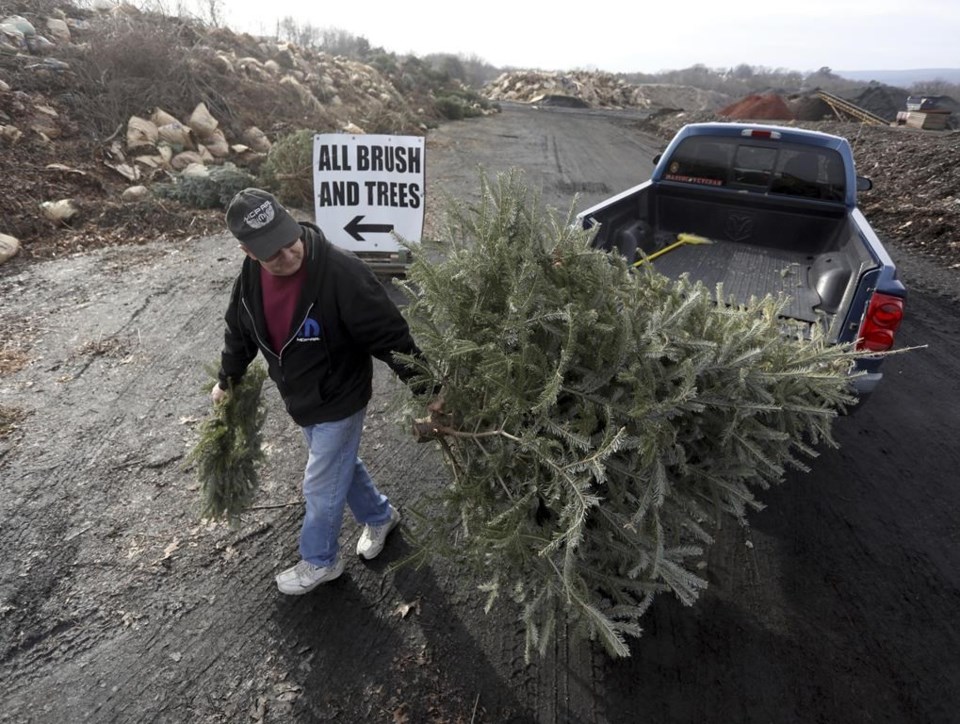Taking down the Christmas tree is only one task after the holiday season. For those with a real tree, figuring out what to do with it can be as easy as placing it by the curb.
In most states, it can be the gift that keeps on giving.
Discarded Christmas trees can be picked up curbside for recycling through regular trash-collection services in various cities. The trees are often shredded for use as compost or mulch that is offered back to residents and non-profit groups free of charge for gardening and landscaping.
In many states, natural resources workers collect whole trees at predetermined drop-off points to be placed in lakes and waterways as .
In parts of Louisiana, for example, Christmas trees are used to shore up coastal areas hit by erosion and to rebuild wetlands. In Jefferson Parish alone, for such efforts.
Some zoos, including petting zoos, accept chemical- and ornament-free Christmas trees to feed to some animals, such as goats, pigs and elephants, and for sensory and entertainment purposes for others, like kangaroos, lions, camels and rhinos.
Or, there's no place like home. Discarded trees can get their final resting place in a corner of the backyard as a shelter and feeding area for birds.
Be sure to remove the ornaments, lights and tinsel. Placing a tarp around the tree before taking it back outside will spare frustration in having to vacuum up the pine needles afterward.
Some offer a way to search for local tree recycling programs. Home Depot stores in select areas also hold tree collection events.
But don’t wait too long after Christmas because dried-out trees can be fire hazards. It’s also dangerous to try to use a fireplace or wood stove to burn parts of the tree because the oils in them could cause chimney fires.
Perhaps the worst place to send discarded live Christmas trees is a landfill because materials buried there break down into the greenhouse gas methane, considered more harmful than carbon dioxide.
—-
For more AP Lifetyles stories, go to .
John Raby, The Associated Press




